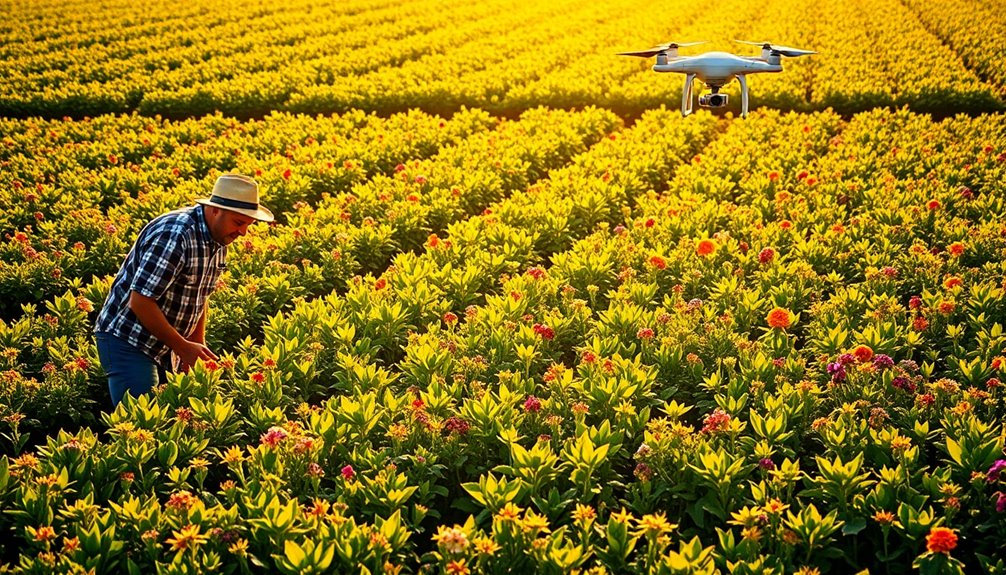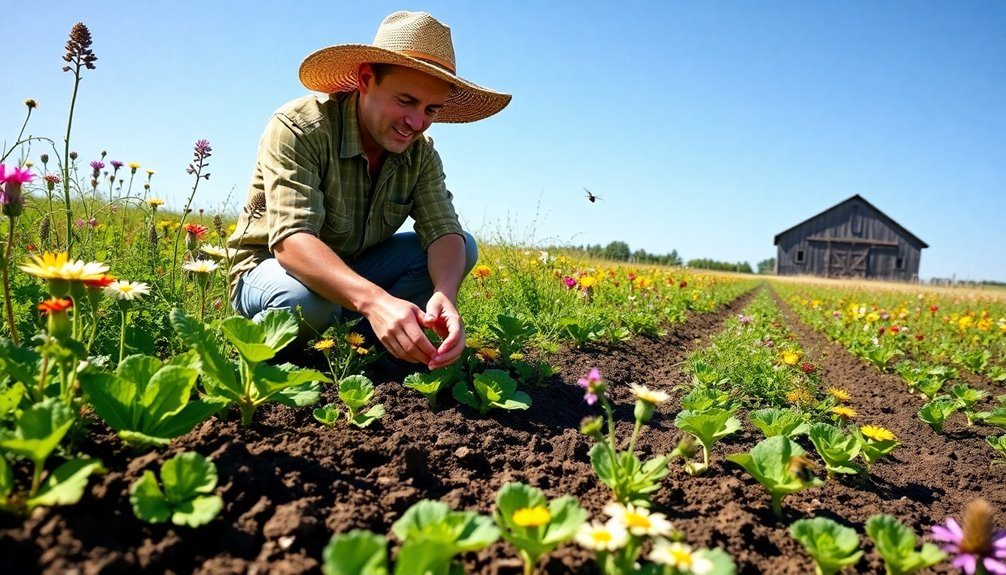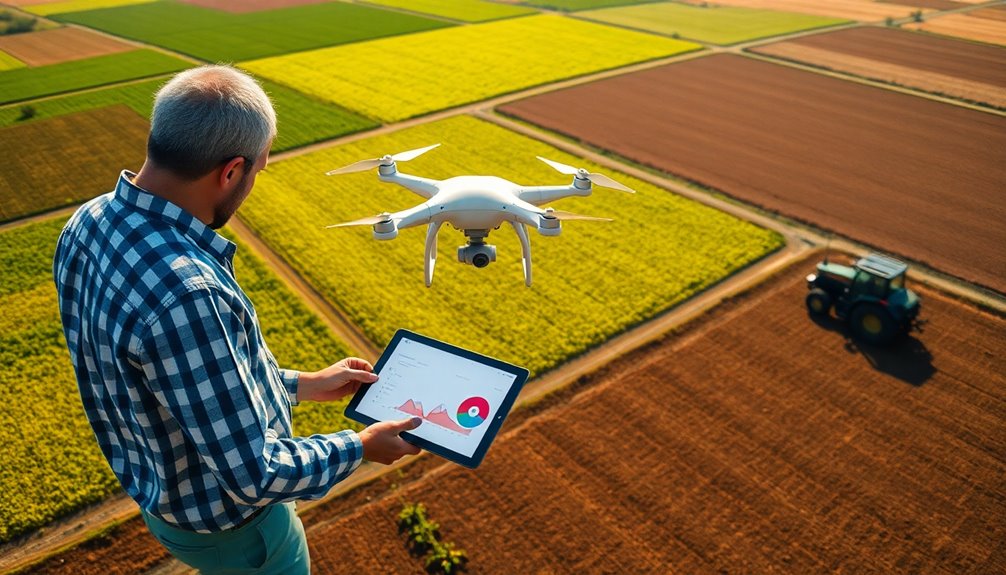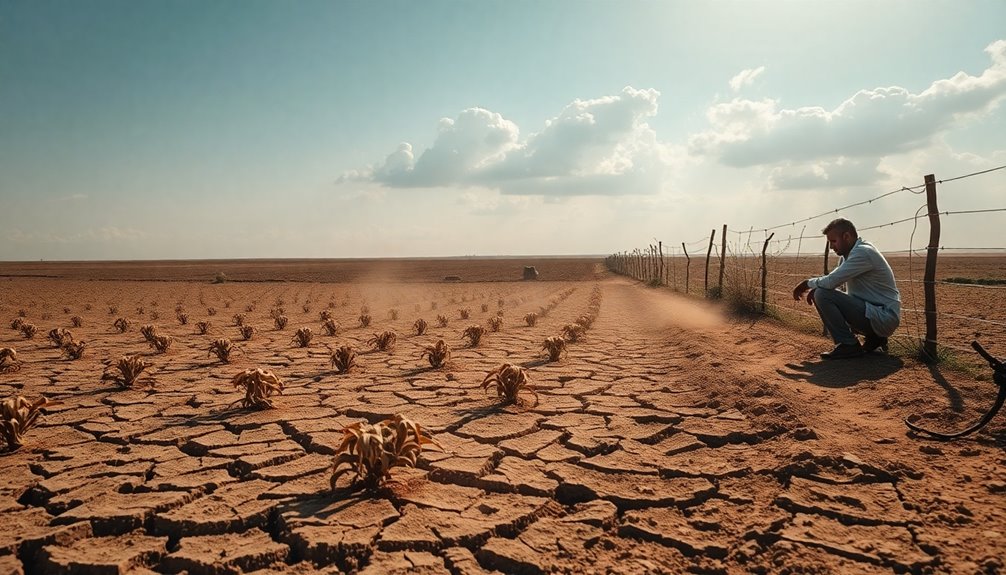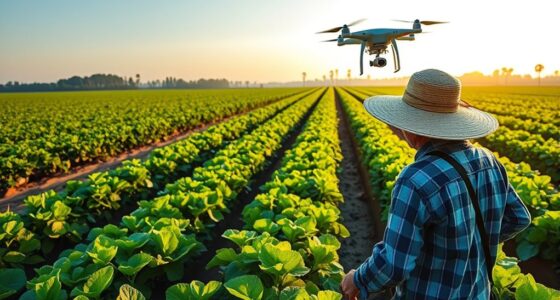Engagement farming transforms how you approach agriculture by bringing together farmers, consumers, and technology. By using digital platforms, you gain personalized insights that enhance your farming practices and boost yields by up to 30%. This method promotes collaboration, allowing you to share knowledge and resources within your community, fostering resilience against challenges like climate change. Digital tools enable real-time monitoring, helping you make data-driven decisions for better crop health. With strong consumer connections, your sales and market presence can grow considerably. Discover how you can implement these strategies and make a meaningful impact on your agricultural success.
Key Takeaways
- Engagement farming involves active collaboration among farmers, consumers, and stakeholders to enhance agricultural practices and sustainability.
- Utilizing digital technology, farmers gain personalized insights to optimize yields and improve efficiency.
- Community involvement in resource sharing and knowledge exchange strengthens ties and fosters resilience against climate change.
- Transparency in the food supply chain builds trust with consumers, resulting in higher sales and market share for sustainable products.
- Addressing financial barriers and knowledge gaps is essential for successfully integrating sustainable practices in engagement farming.
Understanding Engagement Farming
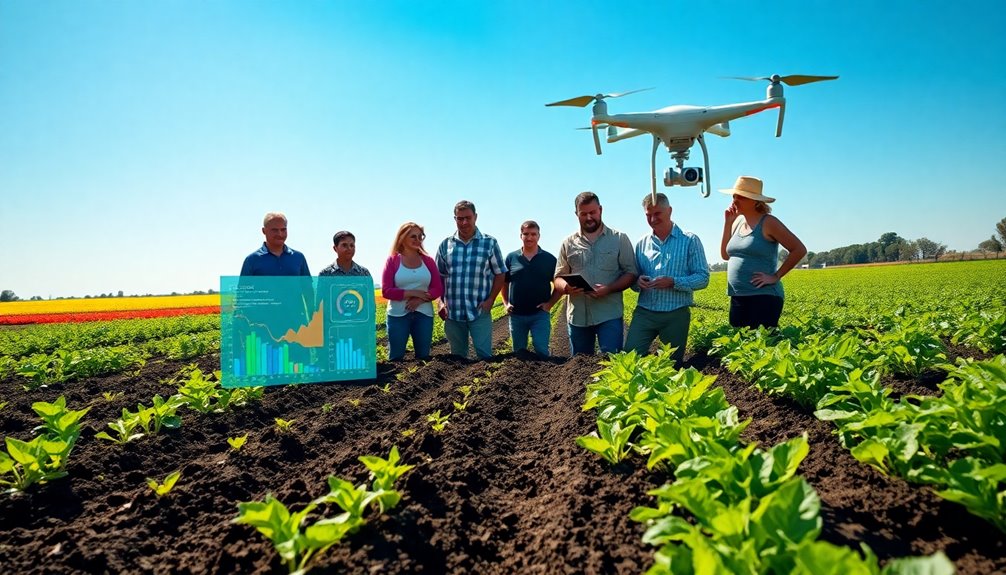
Engagement farming transforms how you approach agriculture by actively involving you in decision-making processes. This innovative method emphasizes the role of farmers, using digital technology and community collaboration to enhance sustainable practices.
By leveraging digital platforms, you gain personalized insights and notifications that drive efficiency and sustainability in your farming operations. This approach not only supports your shift to sustainable agriculture but also tackles social and financial barriers that may hinder progress.
As you engage more deeply, you'll discover better resources and education on sustainable methods, resulting in improved financial outcomes and higher yields. Additionally, engagement farming fosters transparency in the supply chain, helping you validate your sustainable practices and potentially command better prices for your products.
Benefits of Engagement Farming
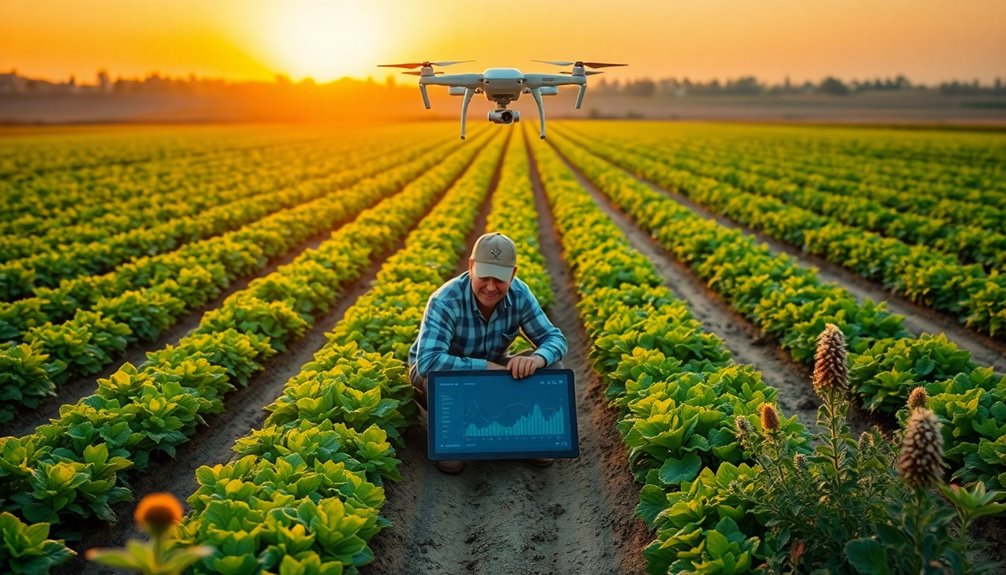
Farmers often find that engagement farming considerably boosts their operations and community ties. By fostering engagement and communication with consumers, you enhance transparency in the food supply chain, driving demand for sustainably sourced products.
Utilizing digital platforms allows you to access valuable insights, leading to improved decision-making and optimized agricultural practices. Enhanced community initiatives can increase productivity, with studies showing potential yield increases of up to 30% on sustainably managed farms.
Financial incentives and personalized support motivate you to adopt sustainable practices, ensuring long-term profitability and environmental stewardship. Collaborating with local stakeholders promotes knowledge sharing, which boosts your resilience against climate change and other agricultural challenges.
Embracing engagement farming truly transforms your farming landscape for the better.
Role of Technology in Engagement Farming
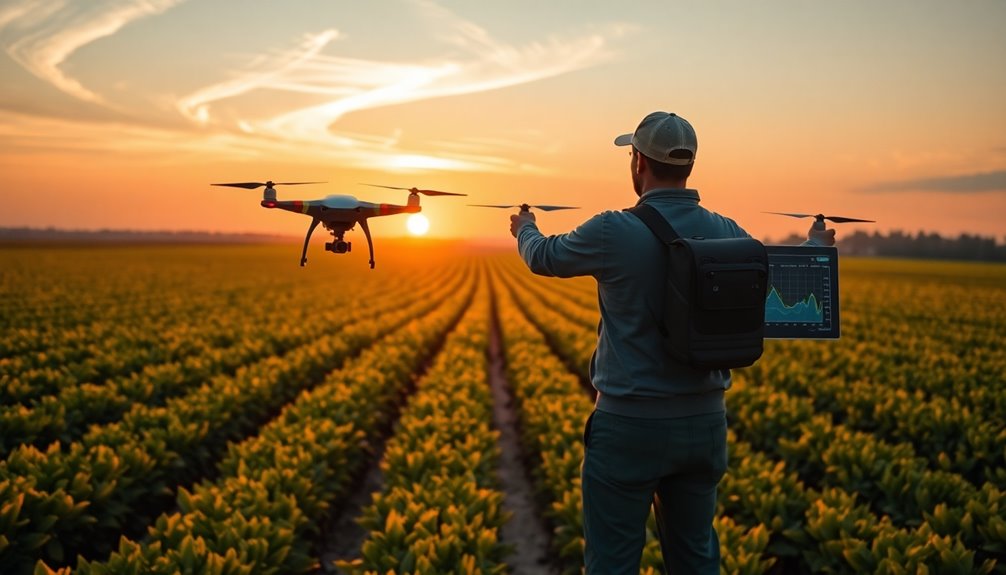
In engagement farming, digital tools empower you to make data-driven decisions that enhance your farming practices.
With real-time access to information, you can monitor your crops and resources more effectively, leading to better yield and sustainability.
Embracing technology not only streamlines your operations but also connects you with a community of experts and fellow farmers for shared insights.
Digital Tools Empower Farmers
Technology's transformative power is reshaping how farmers approach their daily operations and decision-making.
Digital tools connect you to the internet, allowing for efficient collection and dissemination of crop information. This connectivity enhances your decision-making processes and supports sustainable practices.
By employing precision agriculture, you can utilize data-driven insights to improve seed selection, water usage, and fertilizer application, ultimately boosting crop yields while minimizing losses.
IoT devices and AI algorithms enable you to monitor your crops more accurately, fostering resilience and sustainability.
Additionally, integrated platforms like Cropin Cloud facilitate collaboration with agri-businesses, giving you access to broader buyer networks and innovative solutions that enhance soil health.
These advancements empower you to make informed decisions for a more productive farming future. Furthermore, the utilization of renewable energy sources in farming practices can significantly reduce the environmental impact of agricultural operations.
Data-Driven Decision Making
Harnessing the power of data-driven decision-making takes engagement farming to the next level. By utilizing digital tools, you can optimize seed selection, water usage, and fertilizer application, all of which enhance crop efficiency and reduce waste.
Technologies like AI and satellite imagery enable real-time monitoring of crop health and environmental conditions, allowing you to make informed decisions that lead to better yields. Precision agriculture techniques, fueled by data analytics, minimize losses and boost production efficiency, supporting sustainable practices.
Digital platforms integrate data across various farming activities, empowering you to validate these practices and enhance market competitiveness. With tailored insights from embedded intelligence in agricultural advisories, you'll improve your operational effectiveness and drive results that matter.
Key Principles of Engagement Farming
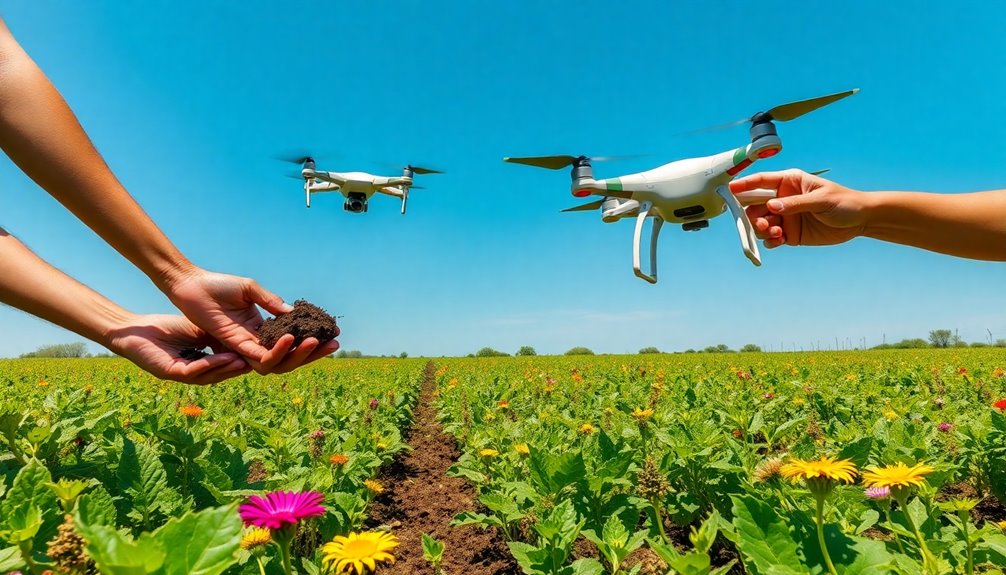
Engagement farming thrives on collaboration, bringing together farmers, consumers, and stakeholders to reshape agricultural practices. This innovative approach emphasizes sustainable practices and fosters transparency in supply chains, enhancing trust among all parties involved.
By utilizing digital tools, you can streamline communication, allowing you to share insights and best practices that drive efficiency. Community involvement plays a significant role in engagement farming, as it encourages local partnerships that enhance resource sharing and knowledge exchange.
Additionally, integrating stakeholder feedback into your farming practices helps you adapt to market demands and environmental challenges more effectively. By embracing these key principles, you'll not only improve your agricultural outcomes but also contribute to a more resilient and sustainable food system.
Enhancing Farmer-Consumer Connections
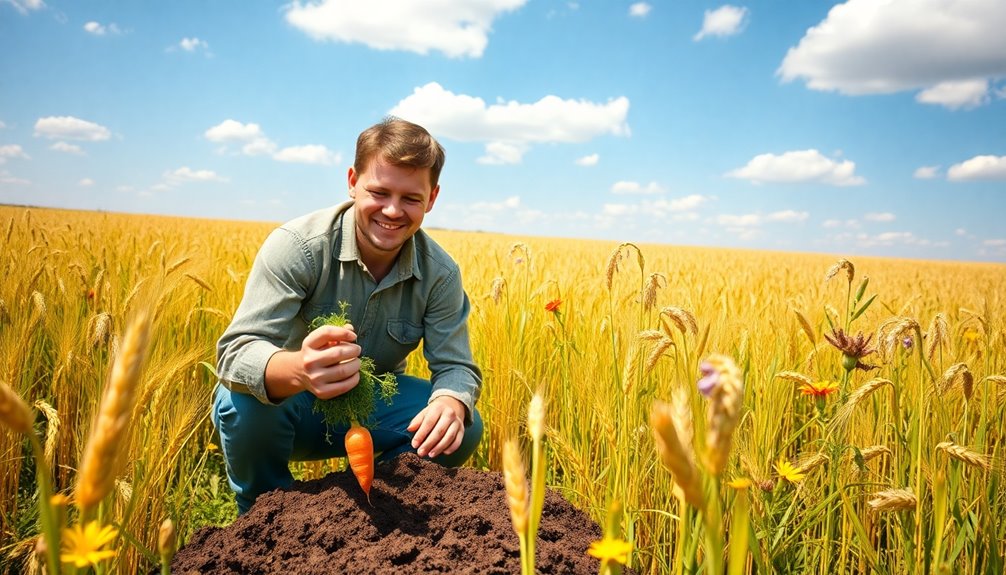
You can strengthen the connection between farmers and consumers by fostering trust through transparent communication.
Leveraging digital platforms allows you to share updates and insights about sustainable practices directly with your audience.
This engagement not only builds relationships but also encourages consumers to support your farming efforts.
Building Trusting Relationships
Building trusting relationships between farmers and consumers is essential for a sustainable agricultural future. Engagement farming focuses on transparency and accountability, allowing you to connect with consumers who value sustainable practices.
By creating these connections, you can build loyalty and encourage informed purchasing decisions.
- Establish community-supported agriculture (CSA) programs to foster direct relationships.
- Use personalized communication to share updates on farming practices and product availability.
- Highlight your commitment to sustainable products, reinforcing trust.
When consumers feel engaged and informed, they'll more likely support your efforts. Research shows that these strong consumer connections lead to higher sales and market share for businesses that prioritize meaningful relationships.
Incorporating mindfulness techniques into your communication can further strengthen these connections and reduce misunderstandings. Embrace engagement farming to cultivate a thriving agricultural community.
Leveraging Digital Platforms
Digital platforms have revolutionized the way farmers connect with consumers, making it easier than ever to share their stories and practices. By leveraging digital platforms, you can enhance transparency and foster trust in your agricultural practices.
With access to data-driven insights, you can optimize crop selection, water usage, and fertilizer application, leading to improved environmental sustainability. These platforms also open up broader buyer networks, allowing you to demand higher prices for your sustainably sourced products, boosting your profitability.
Integrated platforms like Cropin Cloud facilitate collaboration among agri-businesses, enabling the sharing of best practices and resources for sustainable farming. Personalized notifications and expert guidance empower you to implement sustainable practices effectively, driving positive outcomes in both yield and environmental impact. Furthermore, utilizing predictive analytics can help you anticipate market trends and adjust your strategies accordingly.
Sustainable Practices in Engagement Farming
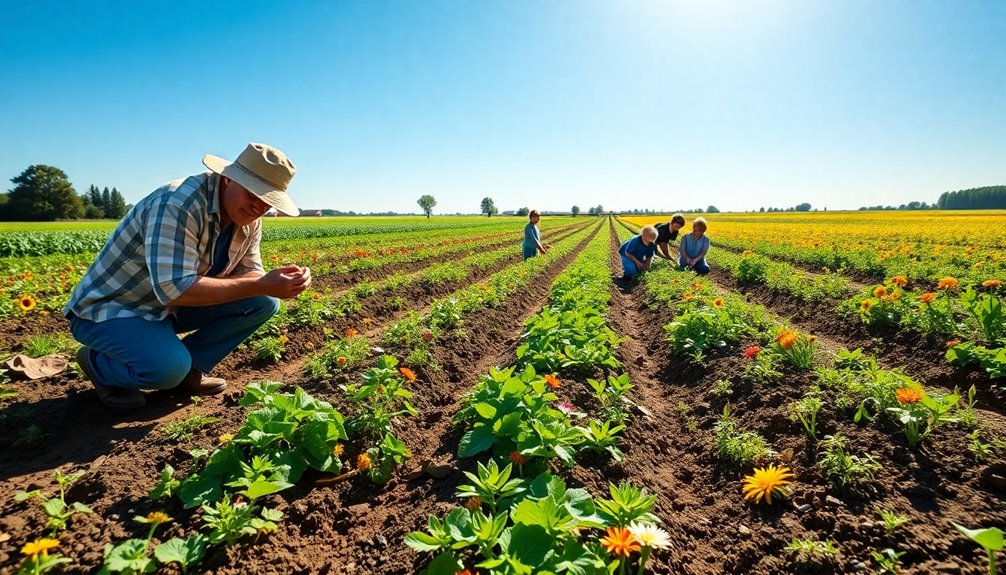
Sustainable practices in engagement farming are transforming the agricultural landscape by fostering community involvement and enhancing productivity.
By adopting eco-friendly agricultural practices, you can access personalized notifications and data-driven insights that improve yield and sustainability metrics. Here are some key benefits:
- Financial incentives help overcome social and economic barriers, making the shift to sustainable farming easier.
- Increased traceability in agricultural supply chains supports your Environmental, Social, and Governance (ESG) goals.
- The growing interest in sustainable practices has led to a 32.5% annual investment growth since 2013.
Engagement farming emphasizes collaboration, enabling you to validate your sustainable practices and demand higher prices for your eco-friendly products.
Embrace these innovative methods to elevate your agricultural practices.
Case Studies of Successful Engagement Farming
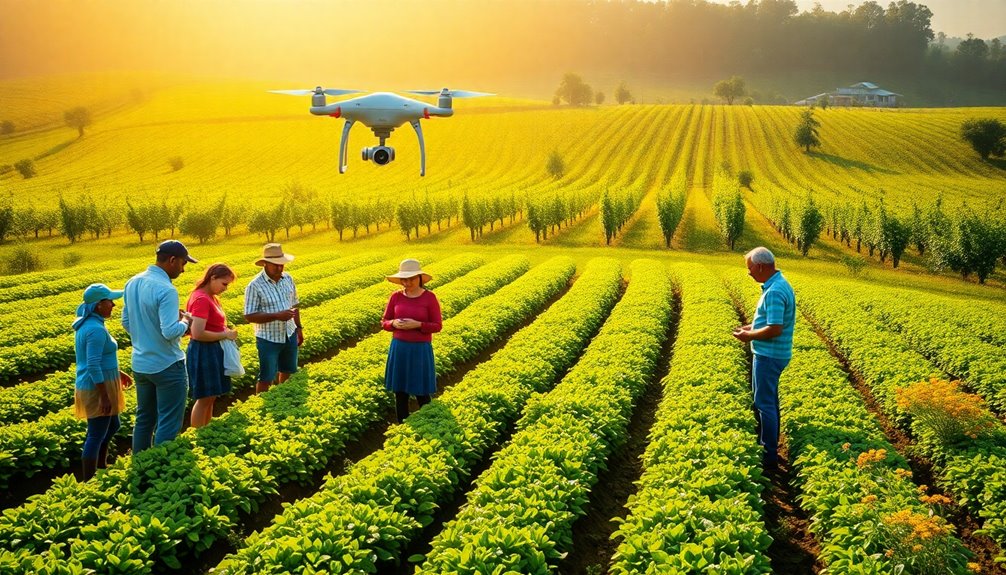
Success in engagement farming often hinges on collaboration and innovative practices that empower farmers. Various case studies illustrate this approach's effectiveness. For instance, Singing Frogs Farm in California employs no-till methods, improving crop yields while conserving water. In Zimbabwe, the Agrarian Freedom Project uses solar-powered IoT sensors to enhance biodiversity and land restoration through farmer involvement. Additionally, Bowles Farming Company applies AI-driven platforms, boosting water efficiency and reducing synthetic inputs. Finally, a partnership with Walmart aims to implement regenerative practices over 2 million acres, showcasing the potential for large-scale sustainable agriculture.
| Case Study | Key Features |
|---|---|
| Singing Frogs Farm | No-till methods, higher yields, reduced water |
| Agrarian Freedom Project | IoT sensors, drones, increased biodiversity |
| Bowles Farming Company | AI platforms, enhanced water efficiency |
| Walmart Partnership | Regenerative practices, large-scale collaboration |
Challenges in Implementing Engagement Farming
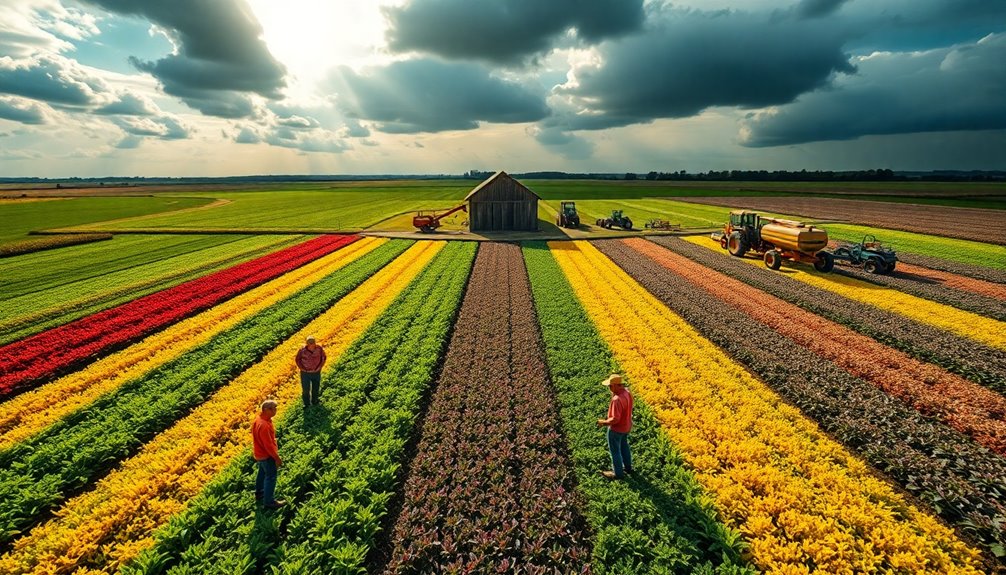
While the case studies of successful engagement farming highlight innovative practices and collaboration, implementing these methods isn't without its hurdles. You may face several challenges that can hinder your shift to sustainable practices.
Consider these key issues:
- Financial barriers can limit your access to capital and resources needed for engagement farming.
- Knowledge gaps often result in confusion and inefficiency, making it difficult to adopt new strategies effectively.
- You might experience temporary yield losses during the shift, which can discourage you from committing fully.
To overcome these obstacles, fostering effective communication and collaboration among stakeholders is essential.
Extensive support is vital to help you navigate the complexities of engagement farming and guarantee you can successfully integrate sustainable practices into your agricultural operations.
Future of Engagement Farming
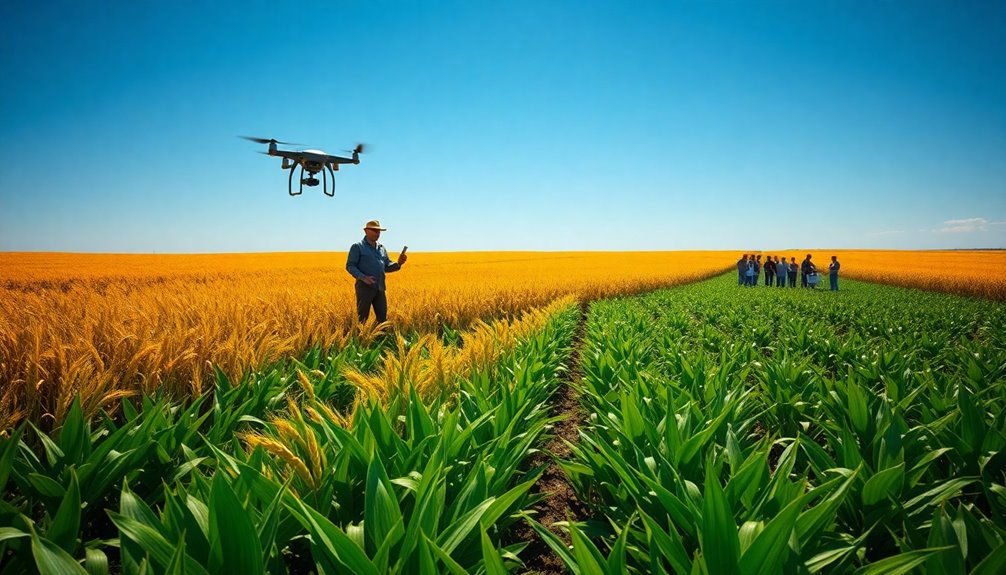
As you look toward the future of engagement farming, integrating digital tools will be essential for enhancing your farming operations.
Collaborative farming networks can help you share knowledge and resources, ultimately improving your yield and sustainability efforts.
Digital Tools Integration
Integrating digital tools into engagement farming transforms how you manage your crops and resources, driving efficiency and productivity. By leveraging precision agriculture technologies, you can optimize resource usage and enhance crop yield with ease.
Here's how digital tools integration benefits your farming practices:
- Real-time monitoring with IoT sensors enables immediate adjustments for better crop health.
- Performance analytics help you validate and refine sustainable practices, maximizing profitability.
- Collaborative digital platforms connect you to broader buyer networks, improving market access and pricing for your sustainable products.
With satellite imagery, you gain precise crop assessment insights, enhancing land management.
Embracing these innovations positions you at the forefront of modern agriculture, ensuring your practices are both efficient and environmentally friendly.
Collaborative Farming Networks
Collaborative farming networks are revolutionizing the way farmers operate by fostering community engagement and resource sharing. These networks leverage technology, enabling data-driven decision-making that enhances sustainable agricultural practices. By joining, you gain access to invaluable resources, which helps tackle climate challenges and improves profitability.
| Benefits | Description |
|---|---|
| Resource Sharing | Optimize inputs and reduce costs |
| Collective Knowledge Growth | Share best practices and innovations |
| Access to Financial Incentives | Gain support for adopting sustainable practices |
Participating in these networks means you're not just farming alone; you're part of a community that enhances efficiency and resilience. Together, you can navigate the agricultural landscape more effectively, ensuring long-term success.
Getting Started With Engagement Farming
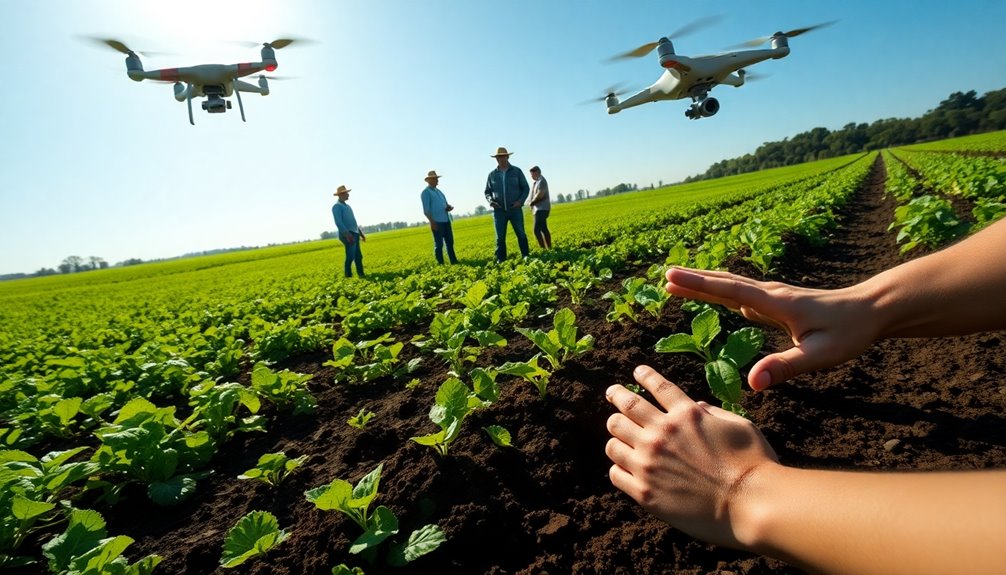
To commence the journey of engagement farming, you'll need to embrace a mindset focused on collaboration and innovation. This approach empowers you as a farmer to optimize resource management and foster sustainable practices.
Start by integrating digital technologies to enhance real-time communication and knowledge exchange with stakeholders.
Consider these key steps:
- Analyze data to improve crop selection and water usage.
- Connect with broader buyer networks to validate sustainable practices.
- Engage in continuous learning with fellow farmers to enhance skills.
Frequently Asked Questions
What Does Engaged in Farming Mean?
When you're engaged in farming, it means you're actively participating in the agricultural process, not just growing crops or raising livestock.
You connect with your community, listen to feedback, and incorporate sustainable practices. You collaborate with stakeholders to improve your methods and product quality.
What Does Innovation Mean in Farming?
Innovation in farming's like planting seeds of change in fertile soil. It means embracing new technologies and practices that boost productivity and sustainability.
You're integrating tools like precision agriculture, AI, and IoT to make smarter decisions that enhance crop management while minimizing waste.
Regenerative methods, hydroponics, and drone tech also play a part, helping you create a more efficient, eco-friendly farming operation.
With innovation, you're not just farming; you're revolutionizing it!
What Are the 4 Techniques a Farmer Can Use to Transition to More Sustainable Farming Practices?
To shift to more sustainable farming practices, you can adopt cover cropping, which improves soil health and biodiversity.
Integrate pest management (IPM) to reduce reliance on synthetic pesticides while promoting natural pest control.
Consider conservation tillage to minimize soil disruption and enhance water retention.
Finally, explore organic farming methods to avoid synthetic inputs and meet consumer demand for sustainability.
These techniques can lead to healthier ecosystems and potentially higher market prices.
What Is the Biggest Innovation in Agriculture?
You've hit the nail on the head by seeking the biggest innovation in agriculture.
The rise of precision agriculture stands out, combining satellite imagery, drones, and IoT technologies. This approach allows you to monitor crops in real-time, optimize resource use, and make informed decisions, ultimately boosting yields.
Conclusion
Engagement farming isn't just a trendy buzzword; it's a game-changer for your agricultural practices. You might worry that it takes too much time, but the rewards—like stronger connections with consumers and increased sales—make it worth the effort. By embracing this innovative method, you can cultivate a loyal customer base while enhancing your farming techniques. So, why not jump in? With the right tools and mindset, you can transform your farm and reap the benefits of engagement farming today.

